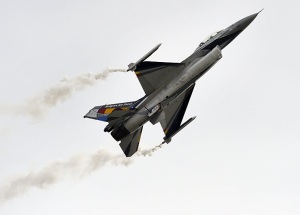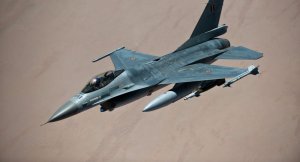Critics see Saudi Arabia’s export of a rigid strain of Islam as contributing to terrorism, but the kingdom’s influence depends greatly on local conditions.

Hillary Clinton and Donald Trump do not agree on much, but Saudi Arabia may be an exception. She has deplored Saudi Arabia’s support for “radical schools and mosques around the world that have set too many young people on a path towards extremism.” He has called the Saudis “the world’s biggest funders of terrorism.”
The first American diplomat to serve as envoy to Muslim communities around the world visited 80 countries and concluded that the Saudi influence was destroying tolerant Islamic traditions. “If the Saudis do not cease what they are doing,” the official, Farah Pandith, wrote last year, “there must be diplomatic, cultural and economic consequences.”
And hardly a week passes without a television pundit or a newspaper columnist blaming Saudi Arabia for “jihadist” violence. On HBO, Bill Maher calls Saudi teachings “medieval,” adding an epithet. In The Washington Post, Fareed Zakaria writes that the Saudis have “created a monster in the world of Islam.”
The idea has become a commonplace: that Saudi Arabia’s export of the rigid, bigoted, patriarchal, fundamentalist strain of Islam known as Wahhabism has fueled global extremism and contributed to terrorism. As the “ISIS” projects its menacing calls for violence into the West, directing or inspiring terrorist attacks in country after country, an old debate over Saudi influence on Islam has taken on new relevance.
Is the world today a more divided, dangerous and violent place because of the cumulative effect of five decades of oil-financed proselytizing from the historical heart of the Muslim world? Or is Saudi Arabia, which has often supported Western-friendly autocrats over “Islamists”, merely a convenient scapegoat for extremism and terrorism with many complex causes – the United States’ own actions among them?
Those questions are deeply contentious, partly because of the contradictory impulses of the Saudi state.
In the realm of extremist Islam, the Saudis are “both the arsonists and the firefighters,” said William McCants, a Brookings Institution scholar. “They promote a very toxic form of Islam that draws sharp lines between a small number of true believers and everyone else, Muslim and non-Muslim,” he said, providing ideological fodder for violent “jihadists”.
Yet at the same time, “they’re our partners in counterterrorism,” said Mr. McCants, one of three dozen academics, government officials and experts on Islam from multiple countries interviewed for this article.
Conflicting Goals
Saudi leaders seek good relations with the West and see “jihadist” violence as a menace that could endanger their rule, especially now that the Islamic State is staging attacks in the kingdom – 25 in the last eight months, by the government’s count. But they are also driven by their rivalry with Iran, and they depend for legitimacy on a clerical establishment dedicated to a reactionary set of beliefs. Those conflicting goals can play out in a bafflingly inconsistent manner.
Thomas Hegghammer, a Norwegian terrorism expert who has advised the United States government, said the most important effect of Saudi proselytizing might have been to slow the evolution of Islam, blocking its natural accommodation to a diverse and globalized world. “If there was going to be an Islamic reformation in the 20th century, the Saudis probably prevented it by pumping out literalism,” he said.
The reach of the Saudis has been stunning, touching nearly every country with a Muslim population, from the Gothenburg Mosque in Sweden to the King Faisal Mosque in Chad, from the King Fahad Mosque in Los Angeles to the Seoul Central Mosque in South Korea. Support has come from the Saudi government; the royal family; Saudi charities; and Saudi-sponsored organizations including the World Muslim League, the World Assembly of Muslim Youth and the International Islamic Relief Organization, providing the hardware of impressive edifices and the software of preaching and teaching.
There is a broad consensus that the Saudi ideological juggernaut has disrupted local Islamic traditions in dozens of countries – the result of lavish spending on religious outreach for half a century, estimated in the tens of billions of dollars. The result has been amplified by guest workers, many from South Asia, who spend years in Saudi Arabia and bring Saudi ways home with them. In many countries, Wahhabist preaching has encouraged a harshly judgmental religion, contributing to majority support in some polls in Egypt, Pakistan and other countries for stoning for adultery and execution for anyone trying to leave Islam.
Limits of Influence
But exactly how Saudi influence plays out seems to depend greatly on local conditions. In parts of Africa and Southeast Asia, for instance, Saudi teachings have shifted the religious culture in a markedly conservative direction, most visibly in the decision of more women to cover their hair or of men to grow beards. Among Muslim immigrant communities in Europe, the Saudi influence seems to be just one factor driving radicalization, and not the most significant. In divided countries like Pakistan and Nigeria, the flood of Saudi money, and the ideology it promotes, have exacerbated divisions over religion that regularly prove lethal.
And for a small minority in many countries, the exclusionary Saudi version of Sunni Islam, with its denigration of Jews and Christians, as well as of Muslims of Shiite, Sufi and other traditions, may have made some people vulnerable to the lure of al-Qaeda, the “ISIS” and other violent “jihadist” groups. “There’s only so much dehumanizing of the other that you can be exposed to – and exposed to as the word of God – without becoming susceptible to recruitment,” said David Andrew Weinberg, a senior fellow at the Foundation for Defense of Democracies in Washington who tracks Saudi influence.
Exhibit A may be Saudi Arabia itself, which produced not only Osama bin Laden, but also 15 of the 19 hijackers of Sept. 11, 2001; sent more suicide bombers than any other country to Iraq after the 2003 invasion; and has supplied more foreign fighters to “ISIS”, 2,500, than any country other than Tunisia.
Mehmet Gormez, the senior Islamic cleric in Turkey, said that while he was meeting with Saudi clerics in Riyadh in January, the Saudi authorities had executed 47 people in a single day on terrorism charges, 45 of them Saudi citizens. “I said: ‘These people studied Islam for 10 or 15 years in your country. Is there a problem with the educational system?’ ” Mr. Gormez said in an interview. He argued that Wahhabi teaching was undermining the pluralism, tolerance and openness to science and learning that had long characterized Islam. “Sadly,” he said, the changes have taken place “in almost all of the Islamic world.”
In a huge embarrassment to the Saudi authorities, “ISIS” adopted official Saudi textbooks for its schools until the extremist group could publish its own books in 2015. Out of 12 works by Muslim scholars republished by the Islamic State, seven are by Muhammad ibn Abd al-Wahhab, the 18th-century founder of the Saudi school of Islam, said Jacob Olidort, a scholar at the Washington Institute for Near East Policy. A former imam of the Grand Mosque in Mecca, Sheikh Adil al-Kalbani declared with regret in a television interview in January that the Islamic State leaders “draw their ideas from what is written in our own books, our own principles.”
Small details of Saudi practice can cause outsize trouble. For at least two decades, the kingdom has distributed an English translation of the Quran that in the first surah, or chapter, adds parenthetical references to Jews and Christians in addressing Allah: “those who earned Your Anger [such as the Jews], nor of those who went astray [such as the Christians].” Sayyed Hossein Nasr, a professor of Islamic studies at George Washington University and the editor in chief of the new Study Quran, an annotated English version, said the additions were “a complete heresy, with no basis in Islamic tradition.”
Continue reading the main story
Accordingly, many American officials who have worked to counter extremism and terrorism have formed a dark view of the Saudi effect – even if, given the sensitivity of the relationship, they are often loath to discuss it publicly. The United States’ reliance on Saudi counterterrorism cooperation in recent years – for instance, the Saudi tip that foiled a 2010 Qaeda plot to blow up two American cargo planes – has often taken precedence over concerns about radical influence. And generous Saudi funding for professorships and research centers at American universities, including the most elite institutions, has deterred criticism and discouraged research on the effects of Wahhabi proselytizing, according to Mr. McCants – who is working on a book about the Saudi impact on global Islam – and other scholars.
One American former official who has begun to speak out is Ms. Pandith, the State Department’s first special representative to Muslim communities worldwide. From 2009 to 2014, she visited Muslims in 80 countries and concluded that Saudi influence was pernicious and universal. “In each place I visited, the Wahhabi influence was an insidious presence,” she wrote in The New York Times last year. She said the United States should “disrupt the training of extremist imams,” “reject free Saudi textbooks and translations that are filled with hate,” and “prevent the Saudis from demolishing local Muslim religious and cultural sites that are evidence of the diversity of Islam.”
Yet some scholars on Islam and extremism, including experts on radicalization in many countries, push back against the notion that Saudi Arabia bears predominant responsibility for the current wave of extremism and “jihadist” violence. They point to multiple sources for the rise and spread of “Islamist terrorism”, including repressive secular governments in the Middle East, local injustices and divisions, the hijacking of the internet for terrorist propaganda, and American interventions in the Muslim world from the anti-Soviet war in Afghanistan to the invasion of Iraq. The 20th-century ideologues most influential with modern “jihadists”, like Sayyid Qutb of Egypt and Abul Ala Maududi of Pakistan, reached their extreme, anti-Western views without much Saudi input. Al-Qaeda and “ISIS” despise Saudi rulers, whom they consider the worst of hypocrites.
“Americans like to have someone to blame – a person, a political party or country,” said Robert S. Ford, a former United States ambassador to Syria and Algeria. “But it’s a lot more complicated than that. I’d be careful about blaming the Saudis.”
While Saudi religious influence may be disruptive, he and others say, its effect is not monolithic. A major tenet of official Saudi Islamic teaching is obedience to rulers – hardly a precept that encourages terrorism intended to break nations. Many Saudi and Saudi-trained clerics are quietist, characterized by a devotion to scripture and prayer and a shunning of politics, let alone political violence.
And especially since 2003, when Qaeda attacks in the kingdom awoke the monarchy to the danger it faced from militancy, Saudi Arabia has acted more aggressively to curtail preachers who call for violence, cut off terrorist financing and cooperate with Western intelligence to foil terrorist plots. From 2004 to 2012, 3,500 imams were fired for refusing to renounce extremist views, and another 20,000 went through retraining, according to the Ministry of Islamic Affairs – though the United States Commission on International Religious Freedom expressed skepticism that the training was really “instilling tolerance.”
An American scholar with long experience in Saudi Arabia – who spoke on condition of anonymity to preserve his ability to travel to the kingdom for research – said he believed that Saudi influence had often been exaggerated in American political discourse. But he compared it to climate change. Just as a one-degree increase in temperature can ultimately result in drastic effects around the globe, with glaciers melting and species dying off, so Saudi teaching is playing out in many countries in ways that are hard to predict and difficult to trace but often profound, the scholar said.
Saudi proselytizing can result in a “recalibrating of the religious center of gravity” for young people, the scholar said, which makes it “easier for them to swallow or make sense of the ‘ISIS’ religious narrative when it does arrive. It doesn’t seem quite as foreign as it might have, had that Saudi religious influence not been there.”
Centuries-Old Dilemma
Why does Saudi Arabia find it so difficult to let go of an ideology that much of the world finds repugnant? The key to the Saudi dilemma dates back nearly three centuries to the origin of the alliance that still undergirds the Saudi state. In 1744, Muhammad ibn Abd al-Wahhab, a reformist cleric, sought the protection of Muhammad bin Saud, a powerful tribal leader in the harsh desert of the Arabian Peninsula.
The alliance was mutually beneficial: Wahhab received military protection for his movement, which sought to return Muslims to what he believed were the values of the early years of Islam in the seventh century, when the Prophet Muhammad was alive. [His beliefs were a variant of Salafism, the conservative school of Islam that teaches that the salaf, or pious ancestors, had the correct ways and beliefs and should be emulated.] In return, the Saud family earned the endorsement of an Islamic cleric – a puritanical enforcer known for insisting on the death by stoning of a woman for adultery.
Wahhab’s particular version of Islam was the first of two historical accidents that would define Saudi religious influence centuries later. What came to be known as Wahhabism was “a tribal, desert Islam,” said Akbar Ahmed, the chairman of Islamic studies at American University in Washington. It was shaped by the austere environment – xenophobic, fiercely opposed to shrines and tombs, disapproving of art and music, and hugely different from the cosmopolitan Islam of diverse trading cities like Baghdad and Cairo.
The second historical accident came in 1938, when American prospectors discovered the largest oil reserves on earth in Saudi Arabia. Oil revenue generated by the Arabian-American Oil Company, or Aramco, created fabulous wealth. But it also froze in place a rigid social and economic system and gave the conservative religious establishment an extravagant budget for the export of its severe strain of Islam.
“One day you find oil, and the world is coming to you,” Professor Ahmed said. “God has given you the ability to take your version of Islam to the world.”
In 1964, when King Faisal ascended the throne, he embraced the obligation of spreading Islam. A modernizer in many respects, with close ties to the West, he nonetheless could not overhaul the Wahhabi doctrine that became the face of Saudi generosity in many countries. Over the next four decades, in non-Muslim-majority countries alone, Saudi Arabia would build 1,359 mosques, 210 Islamic centers, 202 colleges and 2,000 schools. Saudi money helped finance 16 American mosques; four in Canada; and others in London, Madrid, Brussels and Geneva, according to a report in an official Saudi weekly, Ain al-Yaqeen. The total spending, including supplying or training imams and teachers, was “many billions” of Saudi riyals [at a rate of about four to a dollar], the report said.
Saudi religious teaching had particular force because it came from the birthplace of the Prophet Muhammad, the land of Islam’s two holiest places, Mecca and Medina. When Saudi imams arrived in Muslim countries in Asia or Africa, or in Muslim communities in Europe or the Americas, wearing traditional Arabian robes, speaking the language of the Quran – and carrying a generous checkbook – they had automatic credibility.
As the 20th century progressed and people of different nationalities and faiths mixed routinely, the puritanical, exclusionary nature of Wahhab’s teachings would become more and more dysfunctional. But the Saudi government would find it extraordinarily difficult to shed or soften its ideology, especially after the landmark year of 1979.
In Tehran that year, the Iranian revolution brought to power a Shiite government, symbolically challenging Saudi Arabia, the leader of Sunnism, for leadership of global Islam. The declaration of an Islamic Republic escalated the competition between the two major branches of Islam, spurring the Saudis to redouble their efforts to counter Iran and spread Wahhabism around the world.
Then, in a stunning strike, a band of 500 Saudi extremists seized the Grand Mosque in Mecca for two weeks, publicly calling Saudi rulers puppets of the West and traitors to true Islam. The rebels were defeated, but leading clerics agreed to back the government only after assurances of support for a crackdown on immodest ways in the kingdom and a more aggressive export of Wahhabism abroad.
Finally, at year’s end, the Soviet Union invaded Afghanistan and seized power to prop up a Communist government. It soon faced an insurgent movement of mujahedeen, or holy warriors battling for Islam, which drew fighters from around the world for a decade-long battle to expel the occupiers.
Throughout the 1980s, Saudi Arabia and the United States worked together to finance the mujahedeen in this great Afghan war, which would revive the notion of noble armed jihad for Muslims worldwide. President Ronald Reagan famously welcomed to the Oval Office a delegation of bearded “Afghan freedom fighters” whose social and theological views were hardly distinguishable from those later embraced by the Taliban.
In fact, the United States spent $50 million from 1986 to 1992 on what was called a “jihad literacy” project – printing books for Afghan children and adults to encourage violence against non-Muslim “infidels” like Soviet troops. A first-grade language textbook for Pashto speakers, for example, according to a study by Dana Burde, an associate professor at New York University, used “Mujahid,” or fighter of jihad, as the illustration: “My brother is a Mujahid. Afghan Muslims are Mujahedeen. I do ‘jihad’ together with them. Doing jihad against infidels is our duty.”
Pressure after 9/11
One day in the months after the Sept. 11 attacks, Robert W. Jordan, the United States ambassador to Saudi Arabia, was driving in the kingdom with the longtime Saudi ambassador to the United States, Prince Bandar Bin Sultan. The prince pointed to a mosque and said, “I just fired the imam there.” The man’s preaching had been too militant, he said.
Mr. Jordan, a Texas lawyer, said that after the Qaeda attacks, he had stepped up pressure on the Saudi government over its spread of extremism. “I told them: ‘What you teach in your schools and preach in your mosques now is not an internal matter. It affects our national security,'” he said.
After years of encouraging and financing a harsh Islam in support of the anti-Soviet “jihad”, the United States had reversed course – gradually during the 1990s and then dramatically after the Sept. 11 attacks. But in pressuring Saudi Arabia, American officials would tread lightly, acutely aware of American dependence on Saudi oil and intelligence cooperation. Saudi reform would move at an excruciatingly slow pace.
Twelve years after Sept. 11, after years of quiet American complaints about Saudi teachings, a State Department contractor, the International Center for Religion and Diplomacy, completed a study of official Saudi textbooks. It reported some progress in cutting back on bigoted and violent content but found that plenty of objectionable material remained. Officials never released the 2013 study, for fear of angering the Saudis. The New York Times obtained it under the Freedom of Information Act.
Seventh graders were being taught that “fighting the infidels to elevate the words of Allah” was among the deeds Allah loved the most, the report found, among dozens of passages it found troubling. Tenth graders learned that Muslims who abandoned Islam should be jailed for three days and, if they did not change their minds, “killed for walking away from their true religion.” Fourth graders read that non-Muslims had been “shown the truth but abandoned it, like the Jews,” or had replaced truth with “ignorance and delusion, like the Christians.”
Some of the books, prepared and distributed by the government, propagated views that were hostile to science, modernity and women’s rights, not to say downright quirky – advocating, for instance, execution for sorcerers and warning against the dangers of the Rotary Club and the Lions Club. [The groups’ intent, said a 10th-grade textbook, “is to achieve the goals of the Zionist movement.”]
The textbooks, or other Saudi teaching materials with similar content, had been distributed in scores of countries, the study found. Textbook reform has continued since the 2013 study, and Saudi officials say they are trying to replace older books distributed overseas.
But as the study noted, the schoolbooks were only a modest part of the Saudis’ lavishly funded global export of Wahhabism. In many places, the study said, the largess includes “a Saudi-funded school with a Wahhabist faculty [educated in a Saudi-funded Wahhabist University], attached to a mosque with a Wahhabist imam, and ultimately controlled by an international Wahhabist educational body.”
This ideological steamroller has landed in diverse places where Muslims of different sects had spent centuries learning to accommodate one another. Sayyed Shah, a Pakistani journalist working on a doctorate in the United States, described the devastating effect on his town, not far from the Afghan border, of the arrival some years ago of a young Pakistani preacher trained in a Saudi-funded seminary.
Village residents had long held a mélange of Muslim beliefs, he said. “We were Sunni, but our culture, our traditions were a mixture of Shia and Barelvi and Deobandi,” Mr. Shah said, referring to Muslim sects. His family would visit the large Barelvi shrine… “We wouldn’t do that ourselves, but we’d hand out sweets and water,” he said.
The new preacher, he said, denounced the Barelvi and Shiite beliefs as false and heretical, dividing the community and setting off years of bitter argument. By 2010, Mr. Shah said, “everything had changed.” Women who had used shawls to cover their hair and face began wearing full burqas. Militants began attacking kiosks where merchants sold secular music CDs. Twice, terrorists used explosives to try to destroy the village’s locally famous shrine.
Now, Mr. Shah said, families are divided; his cousin, he said, “just wants Saudi religion.” He said an entire generation had been “indoctrinated” with a rigid, unforgiving creed.
“It’s so difficult these days,” he said. “Initially we were on a single path. We just had economic problems, but we were culturally sound.”
He added, “But now it’s very difficult, because some people want Saudi culture to be our culture, and others are opposing that.”
C. Christine Fair, a specialist on Pakistan at Georgetown University, said Mr. Shah’s account was credible. But like many scholars describing the Saudi impact on religion, she said that militancy in Pakistan also had local causes. While Saudi money and teaching have unquestionably been “accelerants,” Pakistan’s sectarian troubles and jihadist violence have deep roots dating to the country’s origins in the partition of India in 1947.
“The idea that without the Saudis Pakistan would be Switzerland is ridiculous,” she said.
Elusive Saudi Links
That is the disputed question, of course: how the world would be different without decades of Saudi-funded shaping of Islam. Though there is a widespread belief that Saudi influence has contributed to the growth of terrorism, it is rare to find a direct case of cause and effect. For example, in Brussels, the Grand Mosque was built with Saudi money and staffed with Saudi imams.
In 2012, according to Saudi diplomatic cables released by WikiLeaks, one Saudi preacher was removed after Belgian complaints that he was a “true Salafi” who did not accept other schools of Islam. And Brussels’ immigrant neighborhoods, notably Molenbeek, have long been the home of storefront mosques teaching hardline Salafi views.
After the terrorist attacks in Paris in November and in Brussels in March were tied to an “ISIS” cell in Belgium, the Saudi history was the subject of several news media reports. Yet it was difficult to find any direct link between the bombers and the Saudi legacy in the Belgian capital.
Several suspects had petty criminal backgrounds; their knowledge of Islam was described by friends as superficial; they did not appear to be regulars at any mosque. Though “ISIS” claimed responsibility for the blasts, resentment of the treatment of North African immigrant families in Belgium and exposure to “ISIS” propaganda, in person or via the internet and social media, appeared to be the major factors motivating the attacks.
If there was a Saudi connection, it was highly indirect, perhaps playing out over a generation or longer. Hind Fraihi, a Moroccan-Belgian journalist who went underground in the Brussels immigrant neighborhood of Molenbeek in 2005 and wrote a book about it, met Saudi-trained imams and found lots of extremist literature written in Saudi Arabia that encouraged “polarization, the sentiment of us against them, the glorification of jihad.”
The recent attackers, Ms. Fraihi said, were motivated by “lots of factors – economic frustration, racism, a generation that feels it has no future.” But Saudi teaching, she said, “is part of the cocktail.”
Without the Saudi presence over the decades, might a more progressive and accommodating Islam, reflecting immigrants’ Moroccan roots, have taken hold in Brussels? Would young Muslims raised in Belgium have been less susceptible to the stark, violent call of “ISIS”? Conceivably, but the case is impossible to prove.
Or consider an utterly different cultural milieu – the world’s most populous Muslim country, Indonesia. The Saudis have sent money for mosque-building, books and teachers for decades, said Sidney Jones, the director of the Institute for Policy Analysis of Conflict in Jakarta.
“Over time,” said Ms. Jones, who has visited or lived in Indonesia since the 1970s, the Saudi influence “has contributed to a more conservative, more intolerant atmosphere.” [President Obama, who lived in Indonesia as a boy, has remarked on the same phenomenon.] She said she believed money from private Saudi donors and foundations was behind campaigns in Indonesia against Shiite and Ahmadi Islam, considered heretical by Wahhabi teaching. Some well-known Indonesian religious vigilantes are Saudi-educated, she said.
But when Ms. Jones studied the approximately 1,000 people arrested in Indonesia on terrorism charges since 2002, she found only a few – “literally four or five” – with ties to Wahhabi or Salafi institutions. When it comes to violence, she concluded, the Saudi connection is “mostly a red herring.”
In fact, she said, there is a gulf between Indonesian “jihadists” and Indonesian Salafis who look to Saudi or Yemeni scholars for guidance. The jihadists accuse the Salafis of failing to act on their convictions; the Salafis scorn the “jihadists” as extremists.
Whatever the global effects of decades of Saudi proselytizing, it is under greater scrutiny than ever, from outside and inside the kingdom. Saudi leaders’ ideological reform efforts, encompassing textbooks and preaching, amount to a tacit recognition that its religious exports have sometimes backfired. And the kingdom has stepped up an aggressive public relations campaign in the West, hiring American publicists to counter critical news media reports and fashion a reformist image for Saudi leaders.
But neither the publicists nor their clients can renounce the strain of Islam on which the Saudi state was built, and old habits sometimes prove difficult to suppress. A prominent cleric, Saad bin Nasser al-Shethri, had been stripped of a leadership position by the previous king, Abdullah, for condemning coeducation. King Salman restored Mr. Shethri to the job last year, not long after the cleric had joined the chorus of official voices criticizing “ISIS”.
But Mr. Shethri’s reasoning for denouncing “ISIS” suggested the difficulty of change. The group was, he said, “more infidel than Jews and Christians.”
Source: NYT, Edited by website team
27-08-2016 | 11:29
Related Articles






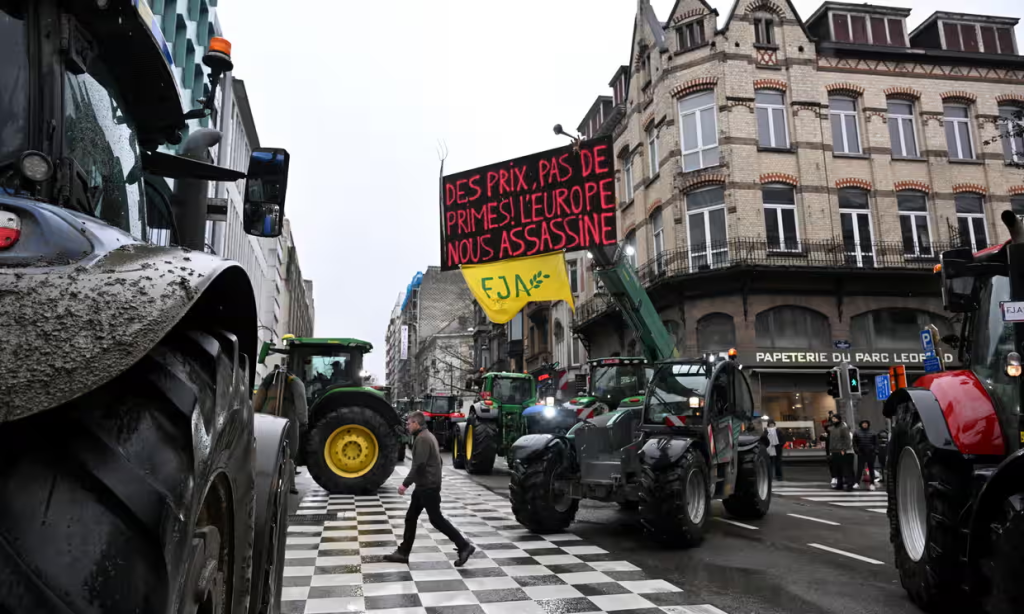
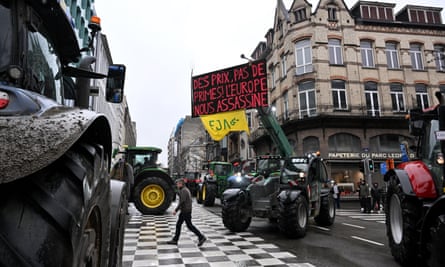

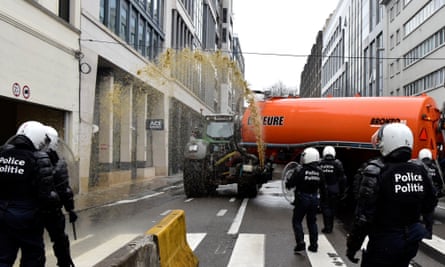










 DAMASCUS, (ST) – The Retired French Colonel Alain Corvez has emphasized that western powers are trying to use all kinds of false pretexts to carry out airstrikes against Syria in order to delay the political solution they don’t want.
DAMASCUS, (ST) – The Retired French Colonel Alain Corvez has emphasized that western powers are trying to use all kinds of false pretexts to carry out airstrikes against Syria in order to delay the political solution they don’t want.












